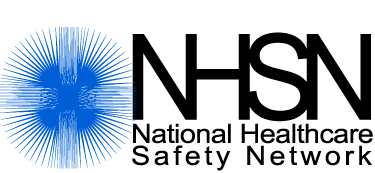Form 57.701 Glycemic Control module Hypo-Annual Hospital Survey
[NCEZID] The National Healthcare Safety Network (NHSN)
57.701 Glycemic Control Module Hypo-Annual Hospital Survey
57.701 - Glycemic Control Module-HYPO Annual Survey
OMB: 0920-0666
Form Approved
 OMB
No. 0920-0666
OMB
No. 0920-0666
Exp. Date: 06/30/2026
www.cdc.gov/nhsn
Glycemic Control Module—Annual Hospital Survey |
||||||||
Instructions for this form are available at: |
||||||||
Page
|
|
|
||||||
*required for saving |
|
Tracking #: |
||||||
Facility ID: |
|
*Survey Year: |
||||||
Section 1. Facility Characteristics |
||||||||
|
|
|
||||||
□ For profit |
□ Not for profit, including church |
□ Government |
||||||
□ Military |
□ Veterans Affairs |
□ Physician owned |
||||||
|
|
|
||||||
If facility is a Hospital: |
|
|
||||||
*Number of patient days: _________ |
|
|||||||
*Number of admissions: __________ |
|
|||||||
|
|
|
||||||
For any Hospital: |
|
|
||||||
2. Is your hospital a teaching hospital for physicians and/or physicians-in-training? |
□ Yes |
□ No |
||||||
If Yes, what type: |
□ Major |
□ Graduate |
□ Undergraduate |
|||||
|
|
|
||||||
|
||||||||
a. ICU (including adult, pediatric, and neonatal levels II/III and III): |
__________________________ |
|||||||
b. All other inpatient locations: |
__________________________ |
|||||||
|
|
|
||||||
Section 2. Glycemic Control Program |
||||||||
Assurance of Confidentiality: The voluntarily provided information obtained in this surveillance system that would permit identification of any individual or institution is collected with a guarantee that it will be held in strict confidence, will be used only for the purposes stated, and will not otherwise be disclosed or released without the consent of the individual, or the institution in accordance with Sections 304, 306 and 308(d) of the Public Health Service Act (42 USC 242b, 242k, and 242m(d)).
Public reporting burden of this collection of information is estimated to average 120 minutes per response, including the time for reviewing instructions, searching existing data sources, gathering, and maintaining the data needed, and completing and reviewing the collection of information. An agency may not conduct or sponsor, and a person is not required to respond to a collection of information unless it displays a currently valid OMB control number. Send comments regarding this burden estimate or any other aspect of this collection of information, including suggestions for reducing this burden to CDC, Reports Clearance Officer, 1600 Clifton Rd., MS D-74, Atlanta, GA 30333, ATTN: PRA (0920-0666).
CDC (form number) Rev (Add release and release date)
|
||||||||
Section 3. Glycemic Control Practices* |
||||||||
|
||||||||
Section 4. Insulin and Hypoglycemia/Hyperglycemia Management Practices** |
||||||||
|
||||||||
Section 5. Glycemic Control Software Tools & Additional Information |
||||||||
If yes, what is the name of the software / tool: _____________________
|
||||||||
*Adapted from Society for Hospital Medicine. The Glycemic Control Implementation Guide. 2nd ed. Ed. Maynard G, Berg K, Kulasa K, O’Malley C, Rogers KM. Available at: https://www.hospitalmedicine.org/globalassets/clinical-topics/clinical-pdf/gcmi-guide-m4.pdf. **Adapted from the University of California, San Diego Center for Innovation and Improvement Science, with permission from Greg Maynard, MD, MSc |
|
|||||||
|
|
|
||||||
|
|
|
||||||
|
|
|
||||||
| File Type | application/vnd.openxmlformats-officedocument.wordprocessingml.document |
| Author | Jones, Karen (CDC/DDID/NCEZID/DHQP) (CTR) |
| File Modified | 0000-00-00 |
| File Created | 2023-11-20 |
© 2025 OMB.report | Privacy Policy